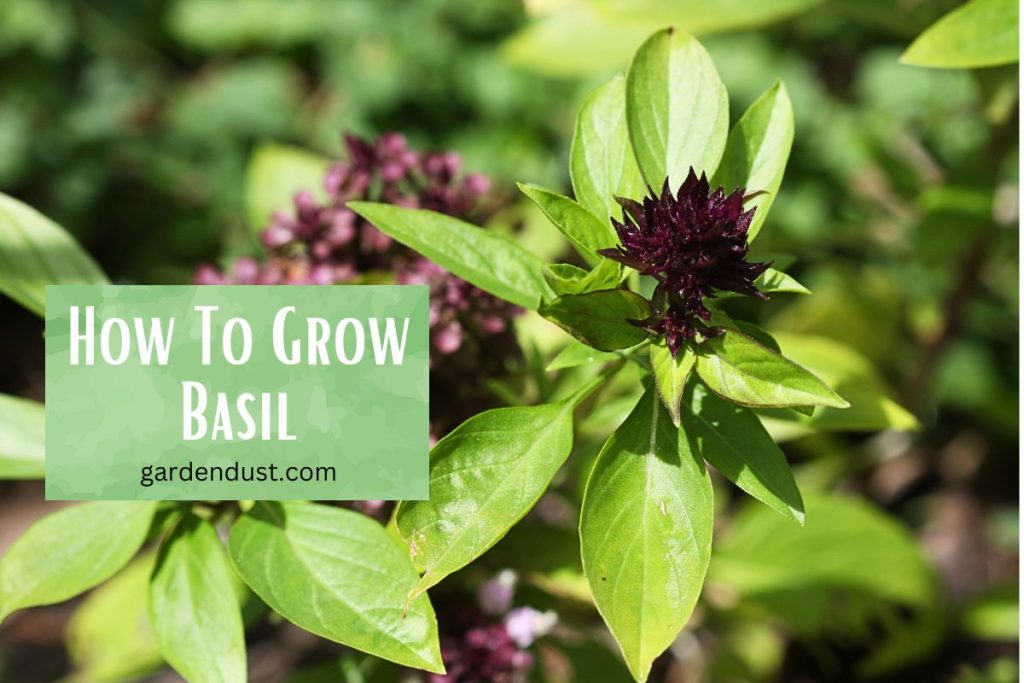Basil, with its aromatic leaves and distinctive flavor, is a versatile herb that adds a burst of freshness to various dishes. Whether you’re a seasoned gardener or a beginner, cultivating basil is a rewarding experience that can be done both indoors and outdoors. In this comprehensive guide, we’ll walk you through the step-by-step process of how to grow Basil from selecting the right variety to harvesting and preserving your flavorful harvest. Let’s begin…
Botanical Name: Ocimum basilicum
Family: Lamiaceae (mint family)
Genus: Ocimum
Common Name: Sweet Basil
Plant Type: Herbaceous annual plant
Season: Warm-season plant, typically planted in late spring or early summer
Native Regions: While basil is believed to have originated in India, Sweet Basil (Ocimum basilicum) has been cultivated and naturalized in various regions worldwide. It is not strictly native to any specific geographic area but has adapted well to diverse climates.
Choosing the Right Basil Variety:
There are numerous basil varieties available, each with its own unique flavor profile and growth characteristics. Common varieties include Sweet Basil, Genovese Basil, Thai Basil, and Lemon Basil. When choosing a basil variety, consider the intended culinary use and the flavor profile that complements your dishes. Whether you’re a fan of the classic sweet basil or enjoy experimenting with unique flavors, there’s a basil variety for every palate and culinary style.
Types of Basil
Basil (Ocimum basilicum) is a versatile herb with various cultivars, each possessing distinct flavors, aromas, and appearances. Here are some popular types of basil:
- Sweet Basil (Ocimum basilicum):
Flavor: Traditional sweet and slightly peppery.
Use: Ideal for Italian dishes, pesto, salads, and as a garnish.
- Genovese Basil:
Flavor: Similar to sweet basil but with a more intense aroma.
Use: Main ingredient in classic pesto, tomato dishes, and Caprese salads.
- Thai Basil (Ocimum basilicum var. thyrsiflora):
Flavor: Anise or licorice notes, slightly spicy.
Use: Essential in Thai and Southeast Asian cuisine, especially in curries and stir-fries.
- Lemon Basil (Ocimum basilicum var. citriodorum):
Flavor: Citrusy, with a hint of lemon.
Use: Perfect for seafood, chicken, salads, and desserts.
- Cinnamon Basil (Ocimum basilicum ‘Cinnamon’):
Flavor: Sweet and spicy with a hint of cinnamon.
Use: Adds a unique twist to desserts, fruit salads, and teas.
- Purple Basil (Ocimum basilicum ‘Purple Ruffles’ or ‘Red Rubin’):
Flavor: Similar to sweet basil but with a mild spicy undertone.
Use: Adds color to salads, garnishes, and vinegars.
- African Blue Basil (Ocimum kilimandscharicum x basilicum):
Flavor: Sweet with a hint of spice.
Use: Both ornamental and culinary; great for pesto and garnishing.
Flavor: Spicy and peppery, with hints of clove.
Use: Important in Ayurvedic medicine; used in teas, soups, and stews.
- Spicy Globe Basil (Ocimum basilicum ‘Spicy Globe’):
Flavor: Intensely spicy.
Use: Compact size makes it suitable for small spaces and container gardening.
- Lettuce Leaf Basil (Ocimum basilicum ‘Lettuce Leaf’):
Appearance: Large, crinkled leaves.
Use: Ideal for wraps, sandwiches, or as a lettuce substitute.
- Greek Basil (Ocimum basilicum ‘Minimum’):
Flavor: Mild and slightly sweet.
Use: Compact size makes it suitable for small gardens or container planting.
- Dark Opal Basil (Ocimum basilicum ‘Dark Opal’):
Flavor: Similar to sweet basil with a hint of spice.
Use: Adds a pop of color to salads, garnishes, and vinegars.
Planting Basil Seeds:
- Fill a seed tray or small pots with a well-draining potting mix.
- Plant basil seeds about 1/4 inch deep and lightly cover them with soil.
- Keep the soil consistently moist until the seeds germinate, usually within 5-10 days.
- Once the seedlings have two sets of true leaves, transplant them into larger containers or directly into the garden.
- Space the plants about 12 to 18 inches apart to allow for proper air circulation.
Caring for Basil Plants:
Sunlight:
Basil thrives in full sunlight, so choose a location that receives at least 6-8 hours of sunlight per day.
Watering:
Keep the soil consistently moist but not waterlogged. Water the plants at the base to avoid splashing water on the leaves, which can lead to disease.
Soil:
Basil prefers well-draining soil with a slightly acidic to neutral pH. Add organic matter, such as compost, to enrich the soil.
Fertilization:
Fertilize basil plants with a balanced, water-soluble fertilizer every 4-6 weeks during the growing season.
Pruning:
Regularly pinch off the top leaves to encourage bushier growth. This also prevents the plant from flowering too soon, which can affect the flavor.
Dealing with Common Issues:
Pests:
Keep an eye out for common basil pests like aphids and spider mites. Insecticidal soap or neem oil can be used as organic pest control options.
Diseases:
Prevent fungal diseases by avoiding overhead watering and providing adequate spacing for air circulation.
Harvesting Basil:
Timing: Start harvesting when the basil plants have developed enough leaves, typically after 6-8 weeks.
Method: Harvest in the morning when the essential oil content is highest.
Use clean, sharp scissors or pruning shears to cut just above a set of leaves, encouraging new growth.
Preserving Basil:
Drying:
Air-dry or use a dehydrator to preserve basil. Hang small bunches upside down in a well-ventilated, dark area.
Freezing:
Puree fresh basil with olive oil and freeze in ice cube trays for convenient use in cooking.
Growing basil is a delightful and rewarding endeavor that yields a bountiful harvest of fresh, aromatic leaves. By following these detailed steps, from selecting the right variety to harvesting and preserving, you’ll soon be enjoying the flavors of homegrown basil in your favorite culinary creations. Whether grown in a garden bed, container, or on a windowsill, basil is a versatile herb that will thrive with a little care and attention. Happy Gardening…






